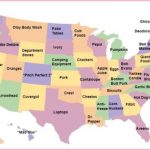
High prices? No problem!
There have always been shoppers who don’t pay attention to price tags, promotions or coupons and simply buy what they want when they want it. Brands love these people.
There are also shoppers who will never buy premium, brand-name products no matter the price. No amount of discount will get them to upgrade from the basic version sold at an “everyday low price.” Brands don’t fret about these people.
But in between is a mass of persuadable shoppers, squarely in the middle. They don’t want to overpay and are reluctant to buy products at full price. But offer them a discount, or a coupon for, say, a dollar off, and maybe they’ll buy a product they otherwise might not have.
These are the people brands are trying to reach when they issue coupons. And if they can get these shoppers loyal to their products and shift them into the “shoppers who buy what they want when they want it” category, even better.
A new research paper suggests that brands have had greater success over the years in moving more people into that category. Or, perhaps, shoppers who’ve grown weary of wheeling and dealing for discounts have moved into that category on their own. Either way, with the cost of groceries rising dramatically and the number of available coupons declining drastically, shoppers may grumble about prices – but more of them are buying what they want when they want it, regardless of price, anyway.
So if you’re wondering whether rising prices might inspire people to start “extreme couponing” again, recent history indicates a lot of people might not be troubled enough by rising prices to change much about their shopping behavior at all.
Economists from Harvard University, Georgetown University and the Düsseldorf Institute for Competition Economics have published “Rising Markups and the Role of Consumer Preferences,” which finds that consumer product manufacturers over the years have gradually been charging more for products that have gradually cost them less to make, and consumers are willingly paying up – and using fewer coupons in the process. The researchers’ conclusion is that “consumers have become less price sensitive over time.” Grocery prices are rising, partly because shoppers haven’t objected to paying.
The paper examines years of data illustrating the rate of product markups and of coupon usage. During that time, various efficiencies have made it less expensive for manufacturers to make and market their products. But they generally haven’t been passing their cost savings onto consumers in the form of lower prices. As a result, product markups – the difference between the marginal cost of getting a product to market, and the price it costs at the shelf – have increased by about 30% since 2006.
So there’s some truth to the notion that supply chain issues aren’t solely to blame for today’s rising prices at the grocery store. Brands are charging more now, just as they have in recent decades, because people are willing to pay more – and manufacturers are enjoying greater profits as a result.
“The degree to which firms can raise prices does depend on how price sensitive consumers are,” study coauthor Alexander MacKay of Harvard Business School told Coupons in the News. “If consumers are less price sensitive now, that could allow firms to increase prices by more than they would have, say, 15 years ago.”
The paper cites previous research that found consumers have balked at higher prices for certain products ranging from cars, to airline tickets, to cement. Marginal costs in these industries have decreased over the years, but markups also decreased or increased only slightly, because consumers simply weren’t willing to pay more. That generally appears not to be the case for the 133 consumer goods categories – cereals, bottled water, paper towels, over-the-counter cold medications and more – that the current research examined.
“Competition generally leads firms to reduce prices in response to lower marginal costs,” MacKay explained. “The fact that prices are not falling suggests that firms are responding to other factors, such as a declining consumer price sensitivity” for consumer products.
To test their hypothesis, the researchers also looked at nearly 40 years’ worth of data on coupon use. Coupon distribution and redemption once ebbed and flowed more predictably in response to economic conditions and consumer behavior. But in recent years, the number of coupons both distributed and redeemed has been steadily declining, as has the overall redemption rate, or the percentage of available coupons that end up being used.
“The declining use of coupons and the declining redemption rates indicate a fundamental shift in consumer shopping behavior,” the paper states. “This shift is consistent with lower price sensitivity arising from exogenous factors. Specifically, declining coupon use indicates less willingness to exert small amounts of effort to obtain lower prices.”
“If consumers are becoming less price sensitive, you would expect them to use coupons less frequently,” MacKay elaborated. “Using a coupon entails a relatively small effort to save some cents on the dollar, much like comparing prices across brands or across retailers. Our results can be explained by consumers becoming less willing to put in these efforts… The coupon data, which shows steadily declining coupon use since the 1990s, suggests that this may be part of a 30-year-trend for U.S. households.”
It all raises the questions of why consumers are less price sensitive, and whether that may now change given the current concerns about inflation. It seems unlikely that shoppers are happily paying more on their everyday grocery purchases because they’re carefree and flush with cash. It may be that manufacturers have successfully trained shoppers to become less price sensitive, moving them out of that middle category into the category of shoppers who don’t object to paying more. And manufacturers’ lower marginal costs are largely invisible to consumers, so shoppers aren’t necessarily aware that manufacturers’ cost savings aren’t being passed along to them.
When it comes to coupons, brands and retailers have tightened restrictions on the number and types of coupons that can be used, limiting consumers’ savings opportunities. And various shopper surveys in recent years have shown that many consumers complain they can no longer “find coupons for the products that I want to buy.” So more often these days, they’re forced to do without, to the point that they might not even bother looking anymore.
But how long will this last? At some point, it seems likely that more inflation-sensitive shoppers are going to reject higher prices for their go-to brands. And anecdotally, at least, interest in couponing appears to be perking up. Couponing does tend to increase during challenging economic times, such as the early 1990’s and late 2000’s. So one might think that conditions seem ripe for a return to an era of “extreme couponing.”
MacKay foresees something a little less, well, “extreme.” “Consumers do tend to adapt to changes in the environment, but it often takes time,” he said. “I think it is quite possible we will see an increase in price sensitivity, and likely also a bump in the use of coupons, but I suspect it would take a couple of years to have a noticeable effect. The degree to which consumers change their behaviors also likely depends on how long we continue to see price increases, and whether these changes outpace changes in wages and other income.”
With more shoppers looking for bargains, opting for lower-priced store brands, and wishing there were more and better coupons to use for the products they want to buy, eventually it seems that something’s got to give if brands want to avoid losing business to the competition. Promotions might increase, prices might moderate, coupons might improve. After all, the coupon redemption rate has to bottom out sometime, and manufacturers’ ability to raise prices while bringing in ever-higher profits can’t last forever. The question is whether inflation is ultimately bad enough to reverse years’ worth of growing consumer price insensitivity – and to what extent.
So we may never return to the days of getting cartloads of groceries for free. But if we can get our groceries for less than we’re paying now – it’s better than the alternative.
Image source: TLC











so does that mean the death of “Extreme Couponing” on TV for good???
Hope so. That show really killed couponing for all of us. There was so much fraud being committed on that show. Been couponing for almost 40 years. I really miss the days of No Expiration Date coupons (as well as lots of coupons available) and Refund Forms for grocery items back in the 80’s and 90’s.
You got a good point there, Gretchen – I remember that after the show became popular, the stores that i shopped at really cut back their coupon policies – even though this show was fake and funny as……it made all of us normal couponers look really bad…..